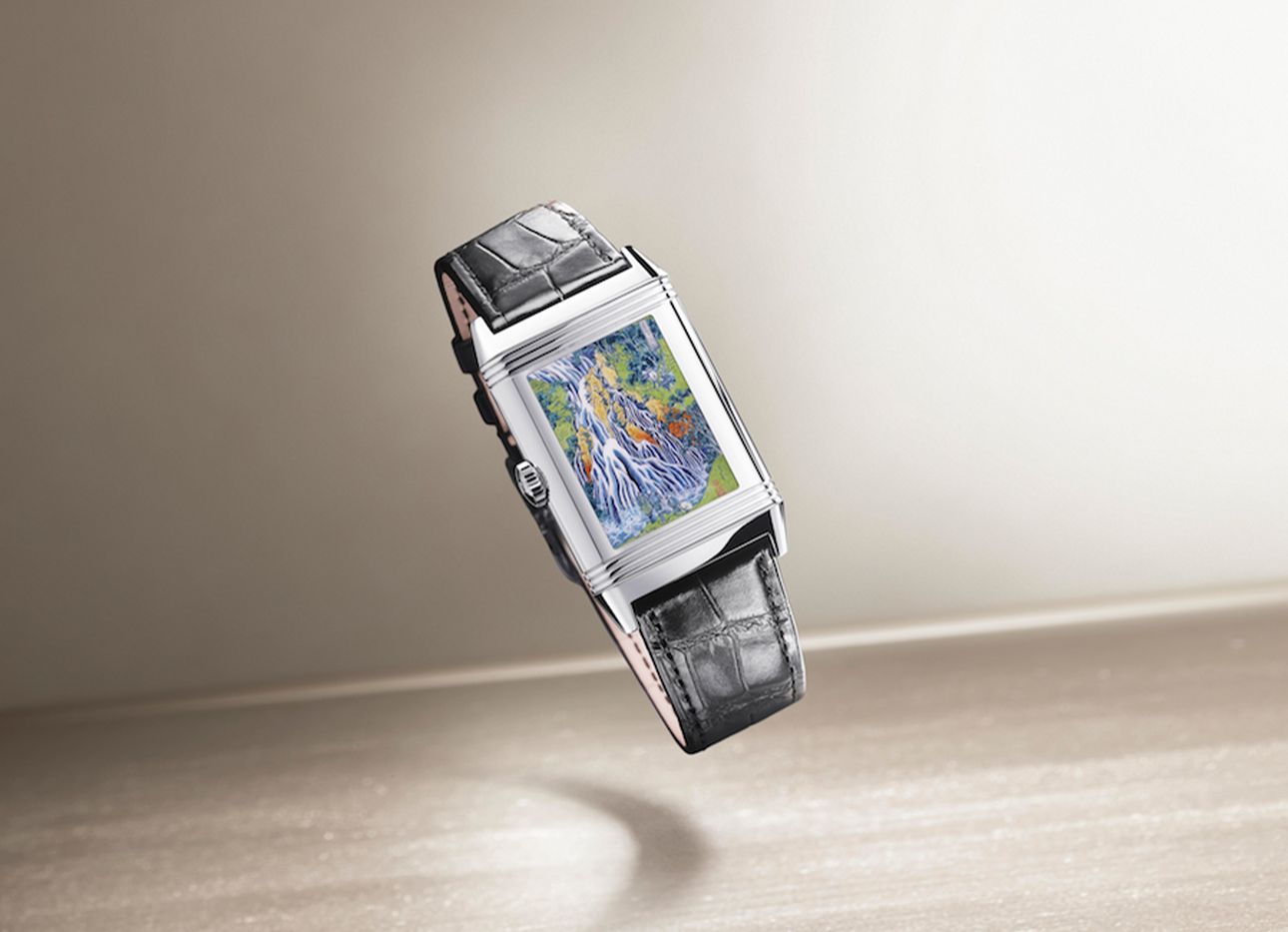
An Iconic Japanese Woodblock Print, Translated Into a Wrist-Sized Wonder
One of the biggest challenges for any great brand is to evolve and remain relevant while staying true to its roots. Jaeger-LeCoultre’s Reverso timepiece, which celebrates its 90th anniversary this year, is a brilliant example of an accessory that is both immediately recognizable—its elegant rectangular case, as its name suggests, cleverly slides out of the watch holder and flips over, to showcase either the face or the back—and that has been continually reimagined in inventive and unexpected ways.
The Reverso was originally created by the Swiss company in 1931 for British officers playing polo in India, who needed a durable watch that could withstand the sport’s various blows. Its rotating case provided protection for the fragile dial, but offered much more than functionality: The watch’s back doubled as a miniature canvas for creative expression, and over the decades, has featured a wide range of artisanal techniques and distinguished pieces of art, including works by Vincent van Gogh, René Magritte, Georges Seurat, and Xu Beihong.
The tradition continues with the recently released limited-edition Reverso Tribute Enamel watch. For its design, Jaeger-LeCoultre’s artisans faithfully reproduced a woodblock print of Japan’s Kirifuri waterfall, made by artist Katsushika Hokusai in 1832. On the reverse side, the dial features a wavy guilloché pattern, executed by hand using a customized, century-old lathe. It resembles flowing water in a rich jade hue that, after hours of research and experimentation with the enamel firing process, matches the green details of the original work precisely. It’s a classic timepiece that celebrates craftsmanship and culture, whichever side you choose to display.